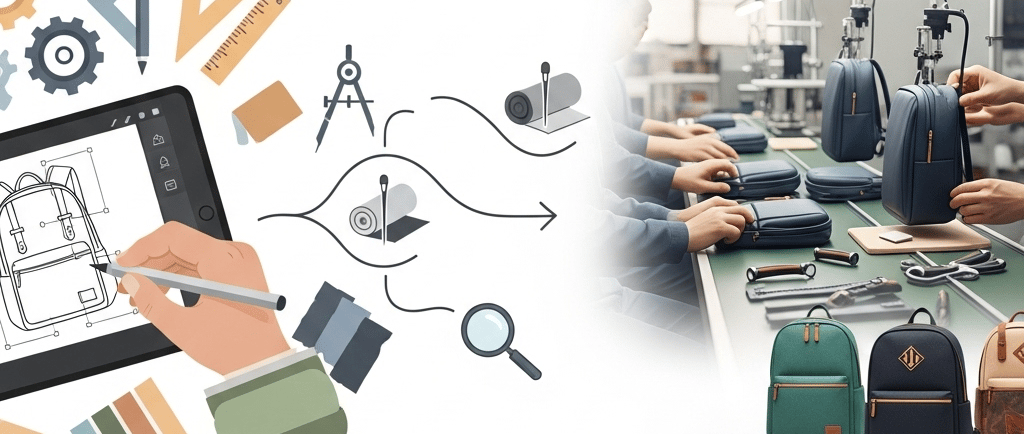Overview of the custom backpack process: from design to production
Blog post description.
CUSTOM BACKPACK SERVICES & GUIDESBACKPACK MARKET & BRAND BUILDINGSUSTAINABLE & INNOVATIVE BACKPACK DESIGN
7/24/20252 min read


Creating a custom backpack is an exciting journey that combines creativity with craftsmanship. Whether you're a startup looking to design a unique product or a business aiming to enhance your brand image, understanding the process is key to ensuring that your custom backpack meets your expectations. Let's take a closer look at each stage of the process, from concept to delivery.
1. Concept Design & Ideation
Every custom backpack starts with a vision. This phase involves understanding the specific needs of the customer and defining the overall design. Key considerations include:
Functionality: What purpose will the backpack serve? Is it for travel, work, outdoor use, or fashion?
Target Audience: Who will be using the backpack? A student, a traveler, a professional, or an eco-conscious customer?
Aesthetic Appeal: What look and feel are desired? Minimalistic, sporty, or luxury?
Key Deliverable: A concept sketch or mood board outlining design elements like shape, size, and color palette.
2. Material Selection
Once the design is defined, the next step is material selection. The material not only affects the backpack's durability and functionality but also its style and price. Common materials include:
Nylon/Polyester: Durable, water-resistant, and often used for everyday backpacks.
Leather: Premium look, often used in higher-end, fashion-focused backpacks.
Eco-Friendly Materials: Recycled plastics, organic cotton, or hemp for environmentally conscious designs.
Key Deliverable: A material sample and color palette for the final selection.
3. Prototype Development
The prototype is the first tangible version of your custom backpack. It’s the blueprint that allows both the customer and manufacturer to visualize the product. At this stage:
Detailed Patterns: Tailoring the design into patterns that define the dimensions and structure.
Prototype Production: Creating a prototype to see how the materials fit together and ensuring it meets all the functional and aesthetic requirements.
4. Sampling & Refinement
Once the prototype is ready, the next step is sampling. This is an opportunity to review the prototype and make any necessary changes:
Fit & Comfort: Ensuring the straps, zippers, and compartments are ergonomic and functional.
Design Adjustments: Fine-tuning color, stitching, and branding elements like logos or labels.
5. Production
After the final sample is approved, the backpack moves into full-scale production. This involves:
Mass Production Setup: Creating patterns and templates for mass production.
Quality Control: Each backpack undergoes quality checks for stitching, zippers, and material integrity.
Customization: If applicable, brand logos, custom prints, or personalized elements are added.
6. Delivery & Quality Check
Before delivery, a final quality inspection is done to ensure each backpack is up to standard. This phase also includes:
Packaging: Proper packaging to ensure the backpacks arrive in excellent condition.
Shipping: Coordinating logistics and ensuring timely delivery to the customer.
The custom backpack process is an intricate journey that requires attention to detail, creativity, and collaboration between the designer, manufacturer, and customer. By following each of these key steps, you can ensure your custom backpack is not only functional but also a reflection of your brand and style.
BACKPACK SUPPLIER
Backpacksupplier is a professional backpack manufacturer specializing in OEM & ODM services. We offer high-quality custom backpacks, travel bags, and business backpacks with flexible MOQ and competitive pricing. Partner with us for premium craftsmanship, innovative designs, and global shipping solutions.
Follow
© 2017-2025. All rights reserved.
Contact Us
📍 Address: Guangzhou, China
📧 Email: ivan@backpacksupplier.com
🌐 Website: backpacksupplier.com